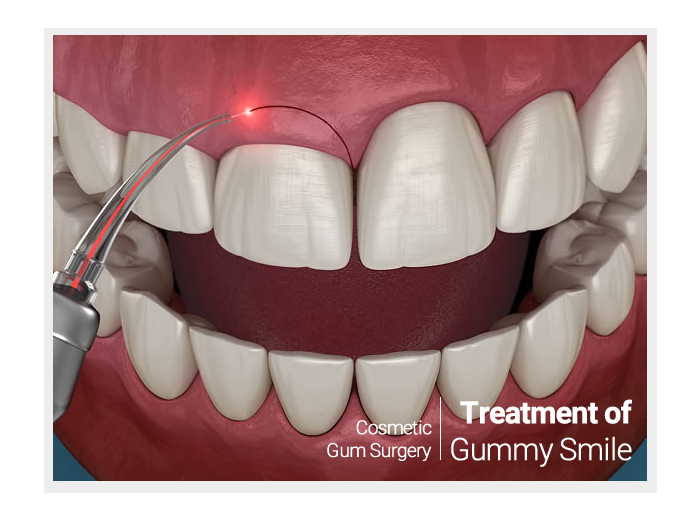
LASER DENTISTRY
LASER SURGERY IS NOT LIMITED TO DENTISTRY, BUT MANY PEOPLE HAVE NEVER HEARD OF LASER DENTISTRY BEFORE HAVING IT DONE.
In the dynamic field of modern dentistry, innovative technologies have revolutionized the way oral health is approached and treated. One such groundbreaking advancement is the utilization of diode lasers. Diode lasers, originally developed for various applications in other industries, have found an indispensable role within dentistry due to their precision, versatility, and minimally invasive nature. These lasers have opened up new avenues for dental professionals to enhance patient care, streamline procedures, and improve treatment outcomes across a spectrum of dental applications.
Laser dentistry is a branch of dentistry that uses focused beams of light, known as lasers, to perform various dental procedures. Lasers produce an intense, narrow wavelength of light that can interact with tissues in the mouth. Laser dentistry offers several advantages, including reduced pain, minimized bleeding, decreased need for anesthesia, and faster healing times.
USES OF BIOLASE & LASER DENTISTRY
- Lasers can be used for procedures involving soft tissues, such as gums. They can perform gum contouring, treat gum disease, remove excess gum tissue, and manage gum inflammation.
- Lasers can be used for dental procedures involving hard tissues like teeth and bone. They can remove decay from teeth, prepare teeth for fillings, and even perform precise tooth preparations for veneers or crowns.
- Some lasers can detect cavities at an early stage by measuring the fluorescence of the tooth’s structure. This allows for more conservative treatment.
- Laser systems can activate bleaching agents used in teeth whitening procedures, enhancing the effectiveness of the treatment.
- Low-level laser therapy (LLLT) can be used to alleviate pain from conditions like temporomandibular joint disorder (TMJ), cold sores, and oral ulcers.
Lasers can be used for oral tissue biopsy, allowing for precise removal of a small tissue sample for pathological examination.
Laser frenectomy is a procedure to correct tongue-tie or lip-tie, where the frenulum is removed or modified using laser energy.
- Lasers can assist in disinfecting and cleaning the root canals during endodontic procedures.
- Lasers can help expose implants that are covered by gum tissue, making it easier for the dentist to access and place the implant.
- Laser dentistry is often associated with less invasive procedures, reducing the need for cutting and sutures, which can lead to quicker recovery times and less discomfort.
TREATMENT OF GUMMY SMILE
Cosmetic gum surgery, also known as gum contouring or gum reshaping, is a dental procedure designed to improve the appearance of the gums and create a more harmonious smile. It is commonly used to address a «gummy smile,» where an excessive amount of gum tissue is displayed when a person smiles. This procedure focuses on achieving a balanced proportion between the teeth, gums, and lips, resulting in a more aesthetically pleasing smile.
| Cosmetic gum surgery can have a transformative impact on your smile and self-esteem. |
|---|
- Enhanced Aesthetics: The primary goal of cosmetic gum surgery is to improve the appearance of your smile by creating a more balanced gum-to-tooth ratio.
- Boosted Confidence: A gummy smile can often lead to self-consciousness. By addressing the excess gum tissue, you can feel more confident and at ease when smiling.
- Minimal Discomfort: The procedure is typically well-tolerated and associated with minimal discomfort due to the use of local anesthesia.
- Quick Results: Cosmetic gum surgery provides immediate results, and you can see the positive changes in your smile right after the procedure.
- Improved Oral Hygiene: Reshaping the gum line can make oral hygiene practices, such as brushing and flossing, more effective and easier to maintain.
- Predictable and Precise: Advances in dental technology and techniques allow for predictable and precise results, ensuring a natural-looking smile.
- Initial Consultation: The process begins with a consultation with a qualified dentist or periodontist who specializes in cosmetic gum surgery. During this consultation, the dentist will assess your oral health, discuss your concerns, and evaluate the extent of the gummy smile.
- Treatment Planning: Based on your individual case, the dentist will create a personalized treatment plan. This plan will address the amount of gum tissue to be removed, the shape of the gum line, and the final appearance of your smile.
- Local Anesthesia: On the day of the procedure, local anesthesia will be administered to ensure your comfort throughout the surgery.
- Gum Reshaping: The dentist uses specialized instruments and techniques to gently remove excess gum tissue. The goal is to expose more of the tooth’s surface and create a more proportional balance between the gums and teeth.
- Sculpting and Contouring: The dentist sculpts and contours the gum tissue to create a harmonious and natural gum line. This may involve adjusting the height and shape of the gums to achieve the desired aesthetic outcome.
- Stitching: Once the gum tissue has been reshaped, the dentist will use sutures to secure the gums in their new position. These sutures are typically dissolvable and will naturally dissolve over time.
- Recovery and Aftercare: After the procedure, you will be given instructions on how to care for your gums during the healing process. It’s important to follow these guidelines to ensure proper healing and minimize the risk of infection.














